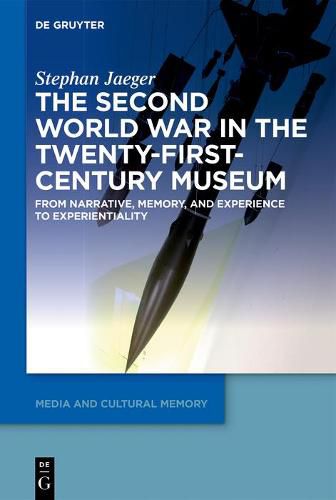Readings Newsletter
Become a Readings Member to make your shopping experience even easier.
Sign in or sign up for free!
You’re not far away from qualifying for FREE standard shipping within Australia
You’ve qualified for FREE standard shipping within Australia
The cart is loading…






This title is printed to order. This book may have been self-published. If so, we cannot guarantee the quality of the content. In the main most books will have gone through the editing process however some may not. We therefore suggest that you be aware of this before ordering this book. If in doubt check either the author or publisher’s details as we are unable to accept any returns unless they are faulty. Please contact us if you have any questions.
The Second World War is omnipresent in contemporary memory debates. As the war fades from living memory, this study is the first to systematically analyze how Second World War museums allow prototypical visitors to comprehend and experience the past. It analyzes twelve permanent exhibitions in Europe and North America - including the Bundeswehr Military History Museum in Dresden, the Museum of the Second World War in Gdansk, the House of European History in Brussels, the Imperial War Museums in London and Manchester, and the National WWII Museum in New Orleans - in order to show how museums reflect and shape cultural memory, as well as their cognitive, ethical, emotional, and aesthetic potential and effects. This includes a discussion of representations of events such as the Holocaust and air warfare. In relation to narrative, memory, and experience, the study develops the concept of experientiality (on a sliding scale between mimetic and structural forms), which provides a new textual-spatial method for reading exhibitions and understanding the experiences of historical individuals and collectives. It is supplemented by concepts like transnational memory, empathy, and encouraging critical thinking through difficult knowledge.
$9.00 standard shipping within Australia
FREE standard shipping within Australia for orders over $100.00
Express & International shipping calculated at checkout
This title is printed to order. This book may have been self-published. If so, we cannot guarantee the quality of the content. In the main most books will have gone through the editing process however some may not. We therefore suggest that you be aware of this before ordering this book. If in doubt check either the author or publisher’s details as we are unable to accept any returns unless they are faulty. Please contact us if you have any questions.
The Second World War is omnipresent in contemporary memory debates. As the war fades from living memory, this study is the first to systematically analyze how Second World War museums allow prototypical visitors to comprehend and experience the past. It analyzes twelve permanent exhibitions in Europe and North America - including the Bundeswehr Military History Museum in Dresden, the Museum of the Second World War in Gdansk, the House of European History in Brussels, the Imperial War Museums in London and Manchester, and the National WWII Museum in New Orleans - in order to show how museums reflect and shape cultural memory, as well as their cognitive, ethical, emotional, and aesthetic potential and effects. This includes a discussion of representations of events such as the Holocaust and air warfare. In relation to narrative, memory, and experience, the study develops the concept of experientiality (on a sliding scale between mimetic and structural forms), which provides a new textual-spatial method for reading exhibitions and understanding the experiences of historical individuals and collectives. It is supplemented by concepts like transnational memory, empathy, and encouraging critical thinking through difficult knowledge.